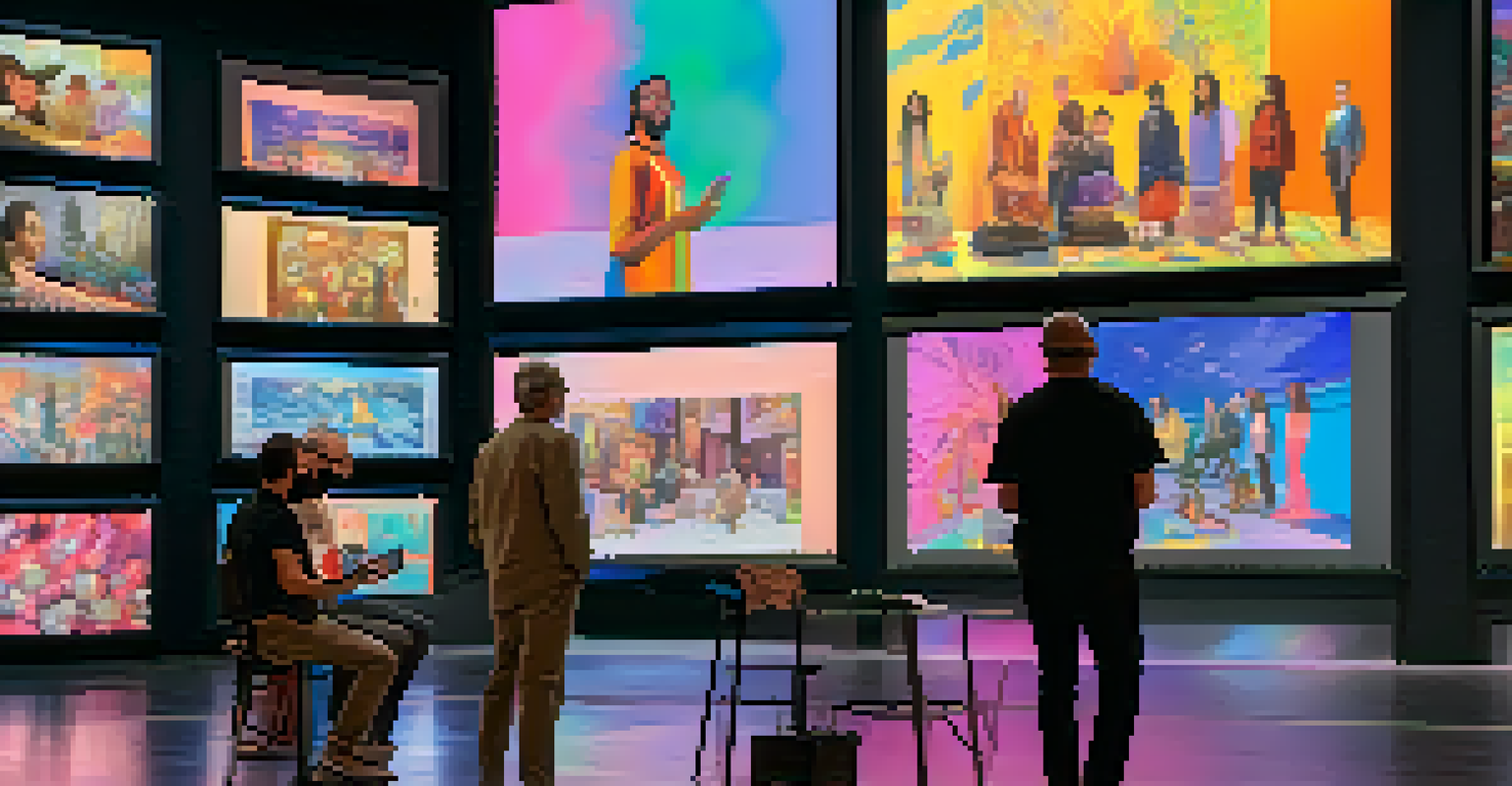Cognitive Dissonance in NFT Collecting: A Psychological View

What is Cognitive Dissonance and Why Does It Matter?
Cognitive dissonance is a psychological phenomenon that occurs when a person holds conflicting beliefs or attitudes, leading to discomfort. For NFT collectors, this often surfaces when they invest in a digital asset but grapple with its fluctuating value and perceived worth. This internal conflict can lead to stress and decision-making challenges, making it vital to understand its implications in the world of NFTs.
The greatest weapon against stress is our ability to choose one thought over another.
Imagine buying a trendy piece of digital art, only for its value to plummet shortly afterward. You might rationalize your purchase by telling yourself that it’s an investment in the future of art or technology. This kind of mental gymnastics is a classic example of cognitive dissonance at play, where the desire to justify the purchase clashes with the reality of its depreciation.
Understanding cognitive dissonance is crucial for NFT collectors because it helps them recognize their emotional responses. By addressing these feelings head-on, collectors can make more informed decisions and maintain a healthier relationship with their investments.
The Role of Identity in NFT Collecting and Dissonance
NFTs often represent more than just digital assets; they symbolize identity and community. When individuals invest in NFTs, they may feel a sense of belonging to a particular group or culture, which can intensify feelings of dissonance if their investments don’t perform as expected. This connection to identity can make it harder to detach from a poor investment, as it feels personal.

Consider the collector who buys a rare NFT from a favored artist. If the value drops, they may struggle between their allegiance to the artist and the financial reality they face. This dissonance can lead to a cycle of denial, where the collector keeps doubling down on their investment rather than cutting losses, hoping for a turnaround.
Cognitive Dissonance Explained
Cognitive dissonance occurs when NFT collectors face conflicting beliefs about their investments, leading to emotional stress.
Recognizing how identity impacts decision-making can empower collectors to navigate their investments more wisely. By separating personal identity from financial decisions, they can reduce dissonance and focus on more objective evaluations of their NFT portfolio.
Market Trends and Their Impact on Dissonance
The NFT market is notorious for its volatility, which can amplify cognitive dissonance among collectors. Rapid shifts in trends mean that what was once a hot commodity can quickly become a liability. This unpredictability can create a psychological tug-of-war as collectors try to align their beliefs about the value of their assets with the reality of the market.
We can't solve problems by using the same kind of thinking we used when we created them.
For instance, a collector might invest heavily in a trending NFT project, only to see interest wane shortly after. This scenario is rife with dissonance, as the collector must reconcile the initial excitement and perceived value with the current market sentiment. It’s a classic case of wanting to believe in the project despite the evidence suggesting otherwise.
To navigate these market swings, collectors can benefit from adopting a more analytical approach. By focusing on market research and trends rather than emotional attachments, they can reduce feelings of dissonance and make more strategic decisions.
The Emotional Rollercoaster of NFT Collecting
NFT collecting is often described as an emotional rollercoaster, with highs of excitement and lows of disappointment. This emotional volatility can trigger cognitive dissonance, especially when collectors feel regret or anxiety about their purchases. The thrill of acquiring a unique piece can quickly turn sour if the value drops or if they face criticism from peers.
Imagine attending a virtual auction, outbidding competitors for a coveted NFT, only to feel regret moments later as its value decreases. This scenario highlights how the initial euphoria can clash with later realizations, leading to dissonance. Collectors may find themselves justifying their decisions to alleviate the emotional discomfort.
Identity Shapes Investment Choices
The connection between NFTs and personal identity can intensify dissonance, making it harder for collectors to make objective decisions.
Addressing these emotional ups and downs is essential for maintaining a healthy mindset in NFT collecting. By acknowledging feelings of regret and reframing them as part of the learning process, collectors can reduce dissonance and foster a more resilient approach to their investments.
Rationalization: A Common Response to Dissonance
Rationalization is a common coping mechanism for dealing with cognitive dissonance, and NFT collectors often resort to it. When faced with the discomfort of a losing investment, collectors might convince themselves that the NFT holds intrinsic value beyond monetary worth, such as artistic significance or cultural relevance. This mental strategy helps alleviate the discomfort of conflicting thoughts.
For example, a collector might cling to the belief that their NFT is a piece of art that will gain recognition in the future, despite current market trends suggesting otherwise. This rationalization allows them to justify their purchase and hold onto the asset longer, even in the face of evidence that contradicts their beliefs.
While rationalization can provide temporary relief, it’s essential for collectors to remain grounded in reality. By regularly assessing the true value of their NFTs and being open to the possibility of loss, they can reduce dissonance and make more objective choices.
Strategies to Mitigate Cognitive Dissonance in Collecting
Mitigating cognitive dissonance in NFT collecting requires a proactive approach. One effective strategy is to set clear goals and criteria for investments. By establishing what constitutes a valuable NFT beforehand, collectors can make decisions that align more closely with their expectations, reducing the likelihood of dissonance when outcomes don’t match.
Additionally, regular reflection on past purchases can help collectors identify patterns in their decision-making. By understanding what led to previous successes or failures, they can adjust their strategies moving forward. This reflective practice fosters a more grounded perspective and can reduce the emotional turmoil associated with contradictory beliefs.
Strategies to Reduce Dissonance
Implementing clear investment goals and engaging with a community can help NFT collectors mitigate feelings of cognitive dissonance.
Lastly, engaging with a community of collectors can provide support and perspective. Sharing experiences and insights with others can normalize feelings of dissonance and offer valuable strategies for coping. By fostering open conversations, collectors can navigate the complexities of the NFT landscape together.
Conclusion: Embracing Dissonance in NFT Collecting
Cognitive dissonance is an inevitable part of the NFT collecting journey. Understanding and embracing this phenomenon can lead to more informed decision-making and a healthier relationship with digital assets. Rather than viewing dissonance as a negative experience, collectors can approach it as an opportunity for growth and learning.
By acknowledging the emotional and psychological aspects of collecting, individuals can cultivate resilience and adaptability in the face of market fluctuations. This mindset shift allows for a more balanced approach to investing, one that values both emotional fulfillment and financial prudence.

Ultimately, embracing cognitive dissonance in NFT collecting empowers collectors to navigate the complexities of the digital art world with greater confidence. By recognizing the interplay between emotions and investments, they can cultivate a more rewarding and sustainable collecting experience.